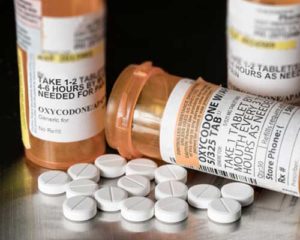Depending on what type is taken, oxycodone will generally affect you for somewhere between 4 and 12 hours. Its use can usually be detected within three days on most drug tests.
Testing for Oxycodone
There are many reasons to test a person for oxycodone abuse. Generally, drug tests are given to employees to make sure they are not abusing drugs.
When to test for drugs can be a hotly debated topic, but such testing clearly has some place in society. In some cases, it is very important that an organization’s members are not abusing drugs, especially while doing their job.
One particularly common example of drug testing is for opioid abuse. Most opioids can be detected in urine within 3 days and in hair within about 30 days of use. Toxicology, which drug testing falls under, is a complicated science, however.
In the case of oxycodone, there are some factors in play that need to be taken into account when determining how long it is going to affect you and how long the use will be detectable.
Duration of Effect
Oxycodone comes primarily in two forms. There is short-acting oxycodone like Percocet, which lasts for about 4 to 6 hours. There is also long-lasting oxycodone like Oxycontin, which lasts for about 12 hours.
Multiple sources estimate that short-acting oxycodone has a half-life of around 3 to 4 hours, and long-lasting oxycodone has a half-life of about 12 hours. This is the point where the body has removed roughly half of the drug from the system, thus greatly diminishing its effects.
This is only tangentially related to dependency. Oxycodone is a potentially very addictive opioid.
You can be psychologically dependent on oxycodone. If you have grown physically dependent on it — as most abusers and even legitimate users will — you may go through serious withdrawal after stopping use. Consult a health care professional if you have concerns about being unable to stop opioid use. It’s not safe to stop use suddenly without medical assistance.
Oxycodone Detection
Detecting oxycodone specifically is actually a bit tricky, according to Premier Biotech, a company that specializes in drug testing. As numerous other drug testing labs will note, standard urine testing can easily miss oxycodone, primarily because a standard opioid urine test is searching for morphine and/or codeine use.
Adjustments can be made to specifically test for oxycodone, however. The organization or individual ordering the test may have to request such an adjustment, potentially at additional cost.
This is an important element for any organization that requires drug testing to remember. A standard drug test, even for a category of drugs, may not catch every drug in that category.
Timeline for Detection
When the test parameters are properly set, oxycodone is able to be detected roughly in line with how long most other opioids are detected.
It can be detected in urine within about three days of use, and it can detected in hair, if the use was fairly chronic, within 30 to 90 days of use.
There are a few factors that cause that window to be so large. Drug detection, especially in hair, is reliant on:
- Frequency of use.
- Potency or dose of the drug taken during those uses.
- Length of hair. This is less an issue than it may seem. For example, Quest Diagnostics (a drug testing lab) requires 3.9 cm of hair to achieve an approximately 90-day history of drug use.
- Length of time since last use (hence the windows of detection noted above).

Urine testing is the most popular choice for drug testing, at least for opioids.
Blood tests are much more invasive and generally have comparable accuracy and time windows of detection to urine testing.
Hair testing is not as invasive as you might imagine since only a small portion of hair is taken, but it cannot detect recent drug use.
Hair testing is therefore only really useful in proving chronic drug use.
Final Notes on Oxycodone Testing
While there are legitimate concerns about which organizations deserve to know about a person’s drug habits, if you are worried about your use of oxycodone being detected, it is likely a sign you have a problem with abuse. Oxycodone abuse can be incredibly destructive. If you think you have a problem with addiction, there is no shame in getting help.